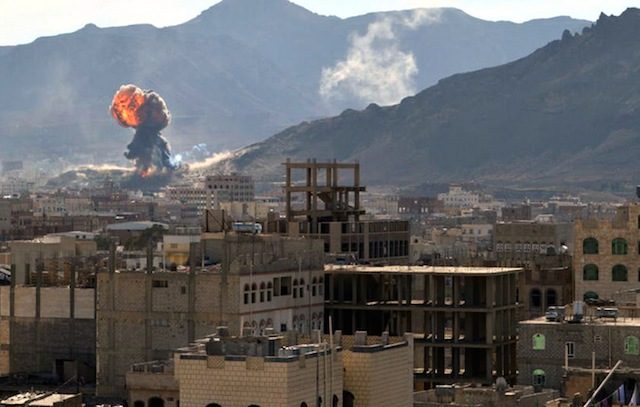SUMMARY
This is AI generated summarization, which may have errors. For context, always refer to the full article.

SANAA, Yemen – An air strike by the Saudi-led coalition on the Yemeni capital’s old quarter killed five people Friday, June 12, as it destroyed homes in the centuries-old heritage site UNESCO calls a “jewel” of Islamic culture.
Sanaa’s old city has been inhabited for more than 2,500 years and was a major centre for the propagation of Islam, boasting more than 100 mosques, 14 public baths and more than 6,000 houses built before the 11th century.
It was inscribed on UNESCO’s World Heritage List in 1986.
Residents said the pre-dawn strike was the first direct hit on old Sanaa since the launch of the bombing campaign against Huthi rebels in late March.
A missile hit the Qassimi neighbourhood without exploding, but killed five residents, including a woman and a child, and destroyed three three-storey houses, medics and witnesses said.
The target of the raid was not immediately clear amid conflicting statements from residents about whether rebels had occupied one of the houses.
UNESCO director general Irina Bokova said she was “profoundly distressed by the loss of human lives as well as by the damage inflicted on one of the world’s oldest jewels of Islamic urban landscape.
She said she was “shocked by the images of these magnificent many-storeyed tower-houses and serene gardens reduced to rubble”.
“The historic value and memories enshrined in these sites have been irreparably damaged or destroyed.”
“This destruction will only exacerbate the humanitarian situation and I reiterate my call to all parties to respect and protect cultural heritage in Yemen,” she said.
Naji Saleh Thawaba, head of Yemen’s General Organisation for the Preservation of the Historic Cities of Yemen also condemned the attack.
“I never imagined that this site could one day become a target; even if there were enemy (positions) in the area, it should never be a target for air strikes,” he told AFP.
The upper storeys of houses rising above ground floors constructed of stone are built of rammed earth and burnt brick, with each building decorated with geometric patterns of fired bricks and white gypsum, inspired by traditional Islamic art.
The old city has already suffered some damage from air strikes on nearby targets, including the defence ministry, prompting a protest from UNESCO in May.
Earlier this month, UNESCO also condemned air strikes that hit the ancient Great Dam of Marib, which was first built in the 8th century BC, in the city that was once the capital of the kingdom of Saba.
The UN body said the attack on the dam came a week after the national museum in Dhamar, in central Yemen, was “completely destroyed.” – Rappler.com
Add a comment
How does this make you feel?
There are no comments yet. Add your comment to start the conversation.